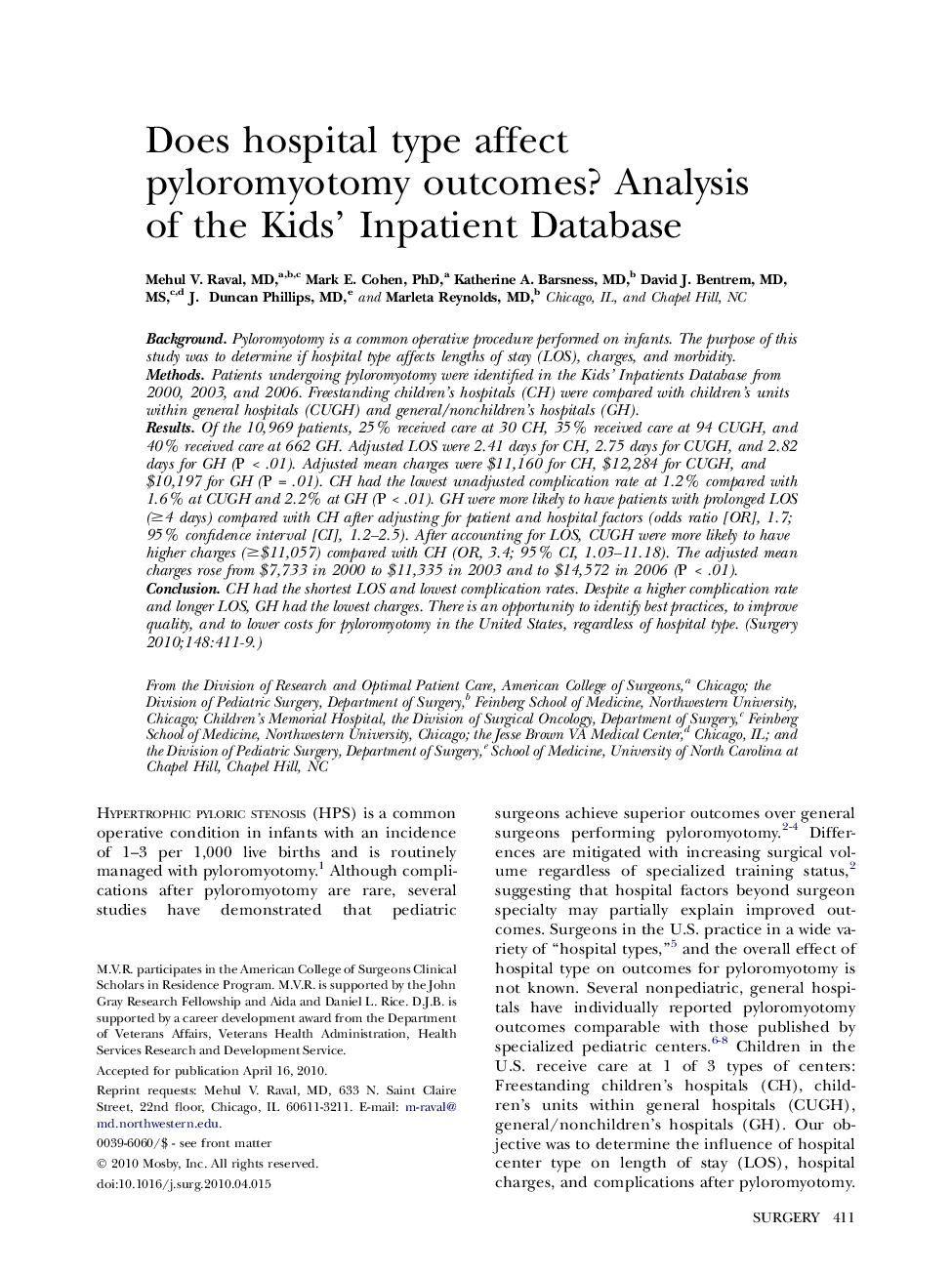| Article ID | Journal | Published Year | Pages | File Type |
|---|---|---|---|---|
| 4308543 | Surgery | 2010 | 9 Pages |
BackgroundPyloromyotomy is a common operative procedure performed on infants. The purpose of this study was to determine if hospital type affects lengths of stay (LOS), charges, and morbidity.MethodsPatients undergoing pyloromyotomy were identified in the Kids' Inpatients Database from 2000, 2003, and 2006. Freestanding children's hospitals (CH) were compared with children's units within general hospitals (CUGH) and general/nonchildren's hospitals (GH).ResultsOf the 10,969 patients, 25% received care at 30 CH, 35% received care at 94 CUGH, and 40% received care at 662 GH. Adjusted LOS were 2.41 days for CH, 2.75 days for CUGH, and 2.82 days for GH (P < .01). Adjusted mean charges were $11,160 for CH, $12,284 for CUGH, and $10,197 for GH (P = .01). CH had the lowest unadjusted complication rate at 1.2% compared with 1.6% at CUGH and 2.2% at GH (P < .01). GH were more likely to have patients with prolonged LOS (≥4 days) compared with CH after adjusting for patient and hospital factors (odds ratio [OR], 1.7; 95% confidence interval [CI], 1.2–2.5). After accounting for LOS, CUGH were more likely to have higher charges (≥$11,057) compared with CH (OR, 3.4; 95% CI, 1.03–11.18). The adjusted mean charges rose from $7,733 in 2000 to $11,335 in 2003 and to $14,572 in 2006 (P < .01).ConclusionCH had the shortest LOS and lowest complication rates. Despite a higher complication rate and longer LOS, GH had the lowest charges. There is an opportunity to identify best practices, to improve quality, and to lower costs for pyloromyotomy in the United States, regardless of hospital type.
